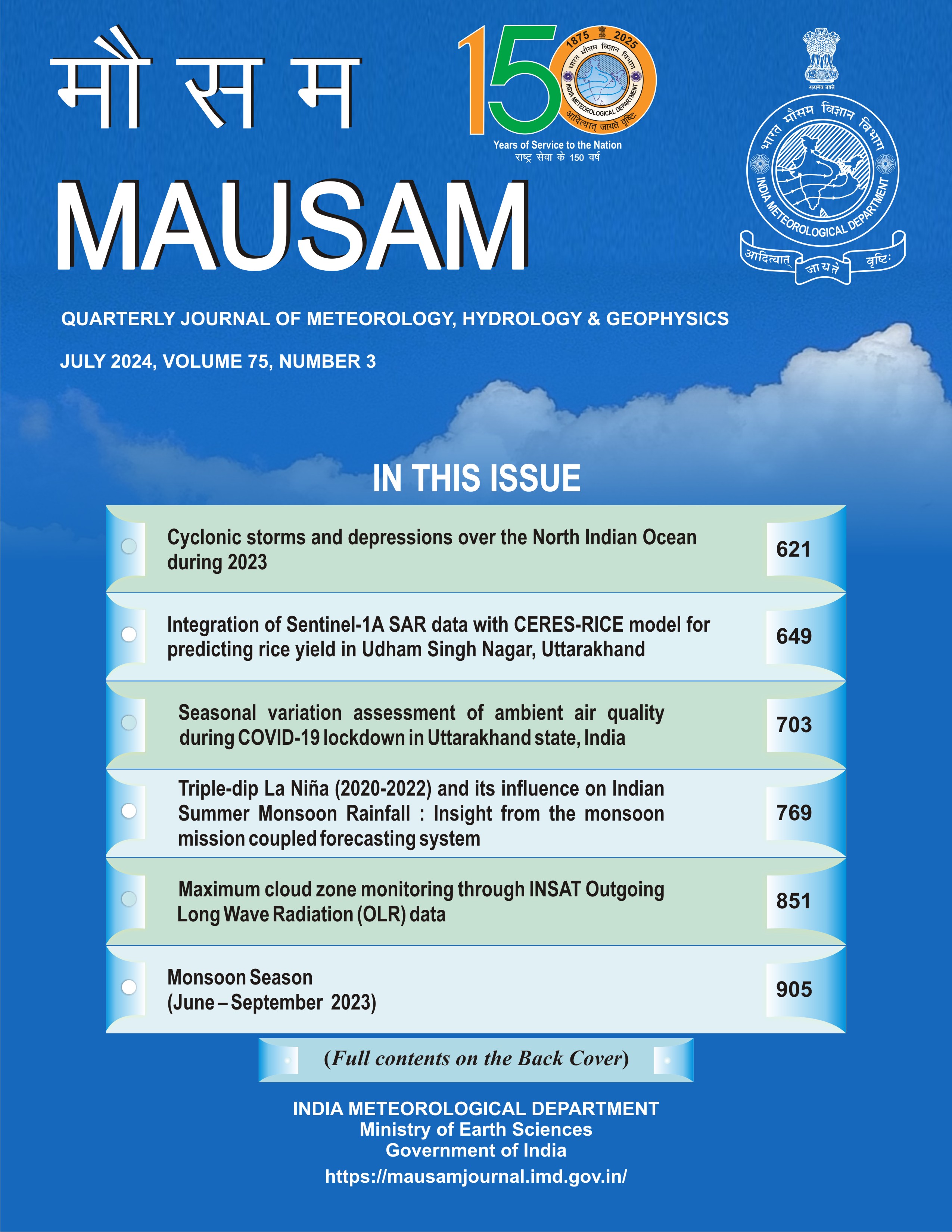Prediction of rainfall and groundwater using machine learning algorithms for Nagpur Division
DOI:
https://doi.org/10.54302/mausam.v75i3.6272Abstract
Rainfall and groundwater predictions are important for water resource planning and also to reduce the consequences of catastrophes like drought and floods. In the present study, Rainfall Anomaly Index (RAI) was estimated for 20 years period (2001–2020) to calculate the positive and negative anomalies. The estimated lowest and highest RAI years were used to compare the effect of rainfall on groundwater level fluctuations. Predictions of rainfall and groundwater were performed using machine learning algorithms. Sktime and scikit-learn libraries were used to predict the rainfall and groundwater levels in the study area using machine learning algorithms such as Naive (N), Exponential Smoothing (ES), Decision Tree Regressor (DT), Random Forest Regressor (RF), AutoARIMA (AA), K-Neighbour regressor (KN), and Gradient Booster Regressor (GB). Based on the observed seasonal rainfall and groundwater data from 2001 to 2015 for Nagpur division, present study predicts values for the 2016–2020 period. Then, using observed and predicted values for 2016–2020, accuracy assessment parameters like correlation coefficient (r), mean absolute error (MAE), Nash-Sutcliffe efficiency (NSE), root mean square error (RMSE), and Taylor diagram were assessed for validation and to investigate the best and worst model forecasters. The present study observes that in the case of rainfall, the AutoARIMA forecaster is the best-fitted model, and in the case of groundwater, the naïve forecaster is the best-fitted model. The decision tree forecaster is the worst-fitted model in both rainfall and groundwater data. Then, the AutoARIMA and Naïve models were used to predict rainfall and groundwater values, respectively, for the years 2021–2025. Impact of ENSO and IOD on ISMR has been assessed. The ENSO phenomenon was more prominent during 2001–2010, and during 2011–2020, both may be the driving factors impacting ISMR.
Downloads
Published
How to Cite
Issue
Section
License
Copyright (c) 2024 MAUSAM

This work is licensed under a Creative Commons Attribution-NonCommercial 4.0 International License.
All articles published by MAUSAM are licensed under the Creative Commons Attribution 4.0 International License. This permits anyone.
Anyone is free:
- To Share - to copy, distribute and transmit the work
- To Remix - to adapt the work.
Under the following conditions:
- Share - copy and redistribute the material in any medium or format
- Adapt - remix, transform, and build upon the material for any purpose, even
commercially.



